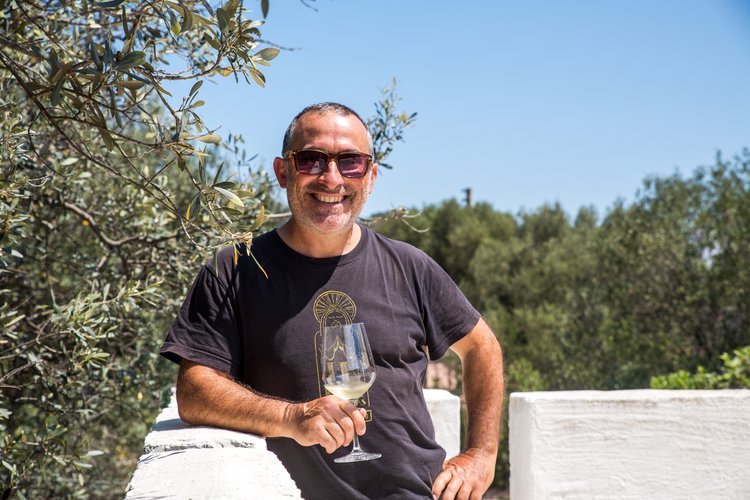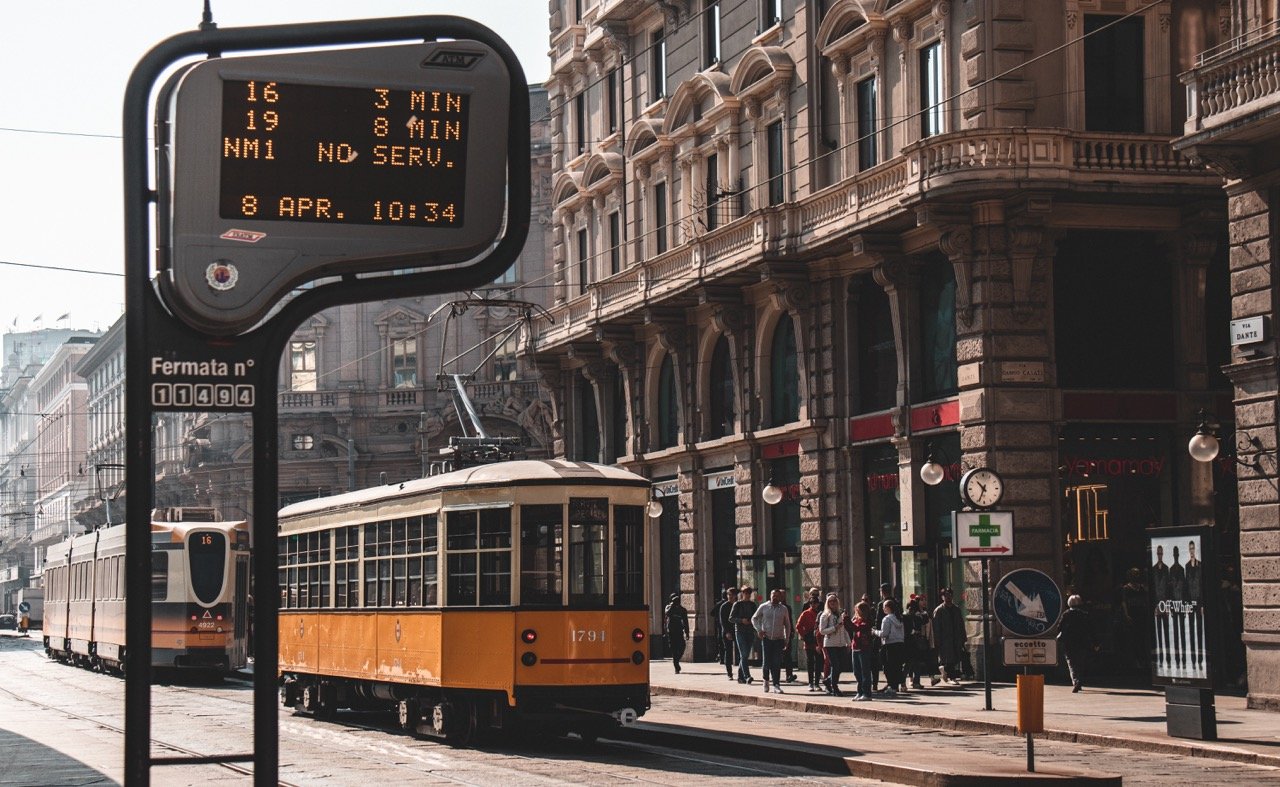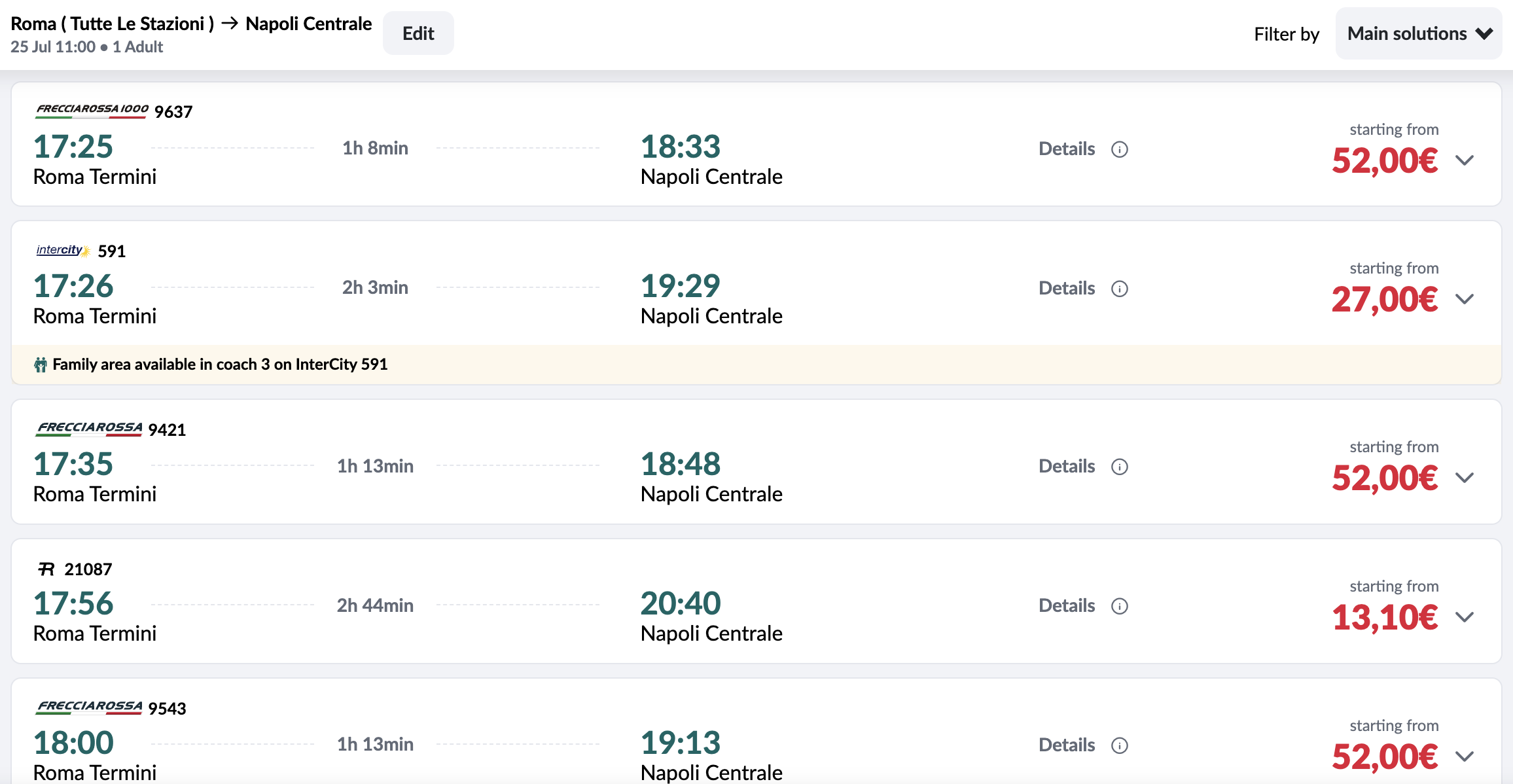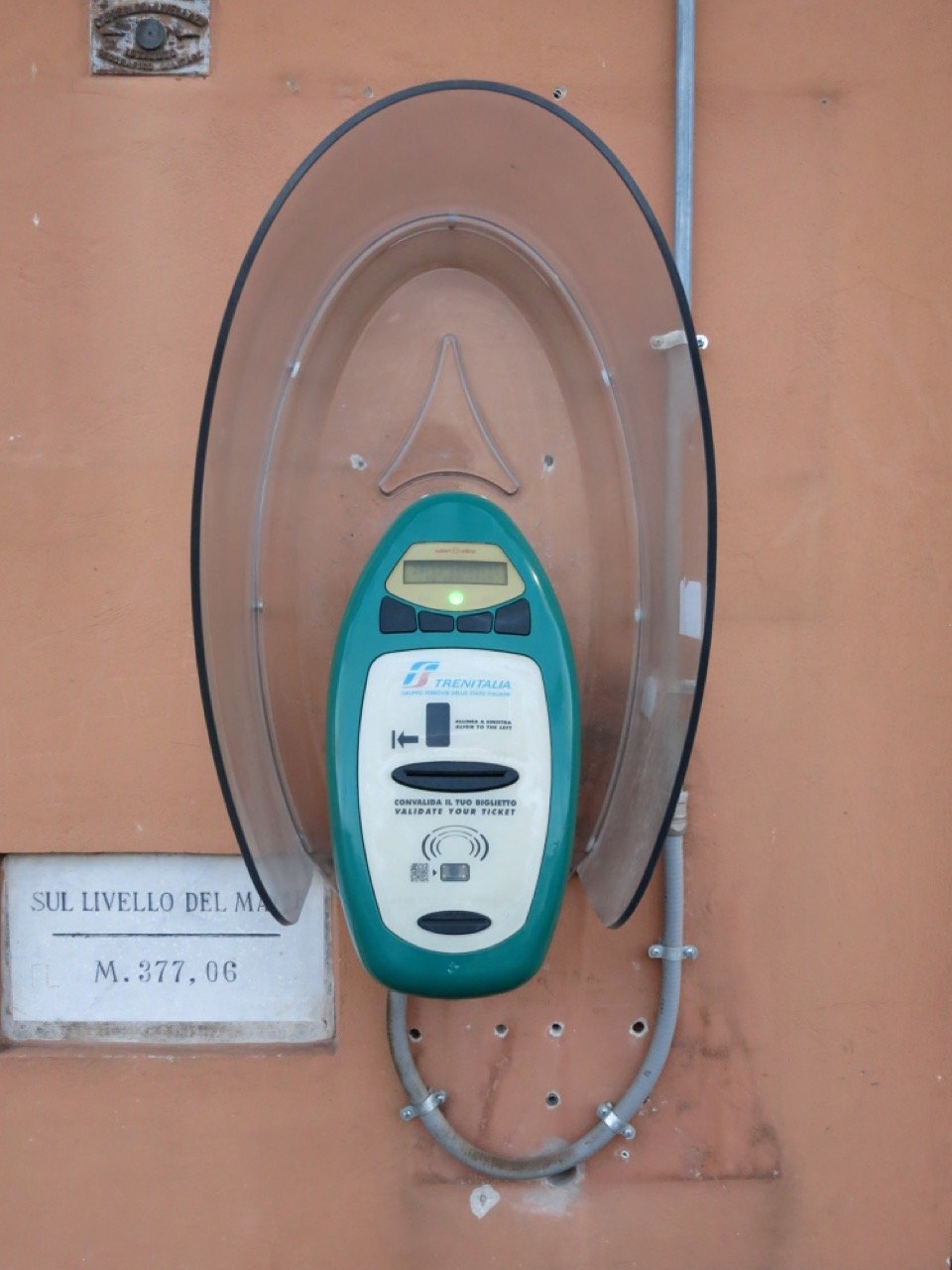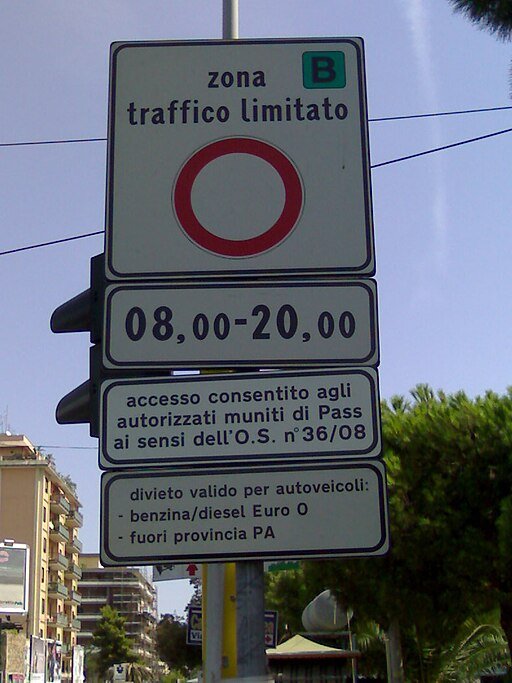How to Plan a Trip to Italy - Italy Travel Guide
Italy is a sun-drenched peninsula in southern Europe surrounded by the gorgeous Mediterranean Sea. Home to civilizations since the Etruscans, Greeks, and Romans, these lands have been continuously inhabited dating back to antiquity.
In today’s Italy, bustling cities preserve the majestic remains of Roman ruins alongside medieval fortresses, renaissance masterpieces, and modern urban architecture. And from the high Alps to Sardinia’s sandy shores, the great outdoors are never far away.
This is the land of la dolce vita (the good life) and it’s true that life here is just a little bit sweeter. Visitors are encouraged to slow down, take things leisurely, and savor the moment. And with the best food in Europe (sorry France!), thousands of kilometers of gorgeous beaches, and hundreds of cities and towns each more lovely than the last, it’s easy to do so.
In this guide, we’ll help you get the most out of your first visit here. But don’t think you’re going to be able to do everything – this is a big country with 20 separate regions, each worth exploring. A first trip to Italy is like your first bite of tiramisu; it just invites another.
Enjoy the guide and buon viaggio!
More Italy travel info:
For more help planning your Italy trip, check out our 10-day and 7-day Italy itineraries.
If you could use some one-on-one assistance putting together your itinerary, consider scheduling an Italy travel consultation.
Table of Contents
Map of Italy
How long to spend
Best time to visit
Must-visit destinations
Italy’s regions
Expenses and costs
Airports and where to fly
Train travel
Renting a car
Driving in Italy
Hotels & accommodation
Restaurants & dining
Useful things to know
10 day itinerary examples


Local help with your planning
We’ve tried to share our best advice on planning a trip to Italy in this guide, but it’s impossible to cover everything in just one article. There’s also no perfect “first-time itinerary” and the right plan for you really depends on your interests and what you want to get out of your trip.
So if you could use some help sorting through all your options, consider scheduling an Italy travel consultation with our countrywide Local Expert, Dania!
These are one-hour Zoom calls where you’ll get to chat with Dania about the trip you’re planning and she’ll share her tips and advice, answer your travel questions, and help you perfect your itinerary.
Map of Italy
How long do you need for a trip to Italy
For a trip to Italy, you need a bare minimum of 10 days.
With 10 days, you’ll have time to explore Rome, enjoy a few days in Florence, wander along Venice’s canals, go shopping and see modern Italy in Milan, and make a side trip to somewhere like the Amalfi Coast, Cinque Terre, or Tuscan wine country.
If you want to be able to spend some time in the countryside, or visit a few smaller cities and towns, you’ll need at least 14 days. With two weeks, you open up the possibility of visiting the Tuscan or Pugliese countryside, the northern lakes, or some smaller cities like Siena, Bologna, or Verona.
With three weeks or more, you could throw more remote regions like Sardinia, Sicily, or the Dolomites into the mix.
As most repeat visitors will tell you, your options are truly endless. Making a list of where to go is easy – the hard part is cutting places out.
Best time to visit Italy
In general, the best time to visit Italy is in shoulder season: the late spring or early fall. In both periods, the weather is pleasant, the summer crowds are absent, prices are reasonable, and everything is open. The locals are also typically a bit friendlier and more patient, as they’re not overwhelmed by tourist hordes.
The spring shoulder season starts in April, but the north of Italy can still be downright cold and the possibility of rain is a constant throughout the peninsula. Summer destinations - beaches, resort towns, and other places that are dependent on tourism - may still be closed for the season and resemble ghost towns
By mid-May, the picture is very different. You’ll be able to swim throughout much of southern Italy, the threat of spring rain has passed, and daytime temperatures are perfect for sightseeing and outdoor activities. Sites will be open and tourist infrastructure will be up and running, but you still get the benefit of shoulder season prices.
The same conditions hold true for the second half of September and October. The first two weeks of September are still high season in Italy, but by the 15th, Italian and European schoolchildren are all back in classes. By the second half of the month, things shift to shoulder season, and you get to enjoy summerlike weather without any of the drawbacks.
Without the overcrowding seen in summer, early morning visits to palaces, towns, and monuments will often allow you to have the grounds almost entirely to yourself. You can also usually get away with last-minute bookings as there’s quite good availability for everything from car rentals to hotels.
If your schedule allows it, plan to visit in the late spring or early fall instead of the summer.
Must-visit destinations for a first trip
Any first trip to Italy should at least include Rome, Florence, and Venice.
Lots of people will tell you that all three cities are over touristed and full of tourist traps. They’re right! However, they are three of the most wonderful cities in the world.
Rome alone has enough sights to merit a week’s visit. Florence is the cradle of the renaissance, and Venice the opulent capital of a once mighty maritime empire. To skip any of these cities on your first visit would be ludicrous.
Tourism saturation in these cities is a real problem, but your goal should be a better planned visit, not no visit.
For those with more than a week, the Amalfi Coast, Cinque Terre, Tuscan countryside, the northern lakes, and cities like Milan, Naples, and Bologna, are all worthy additions to any time-limited itinerary.
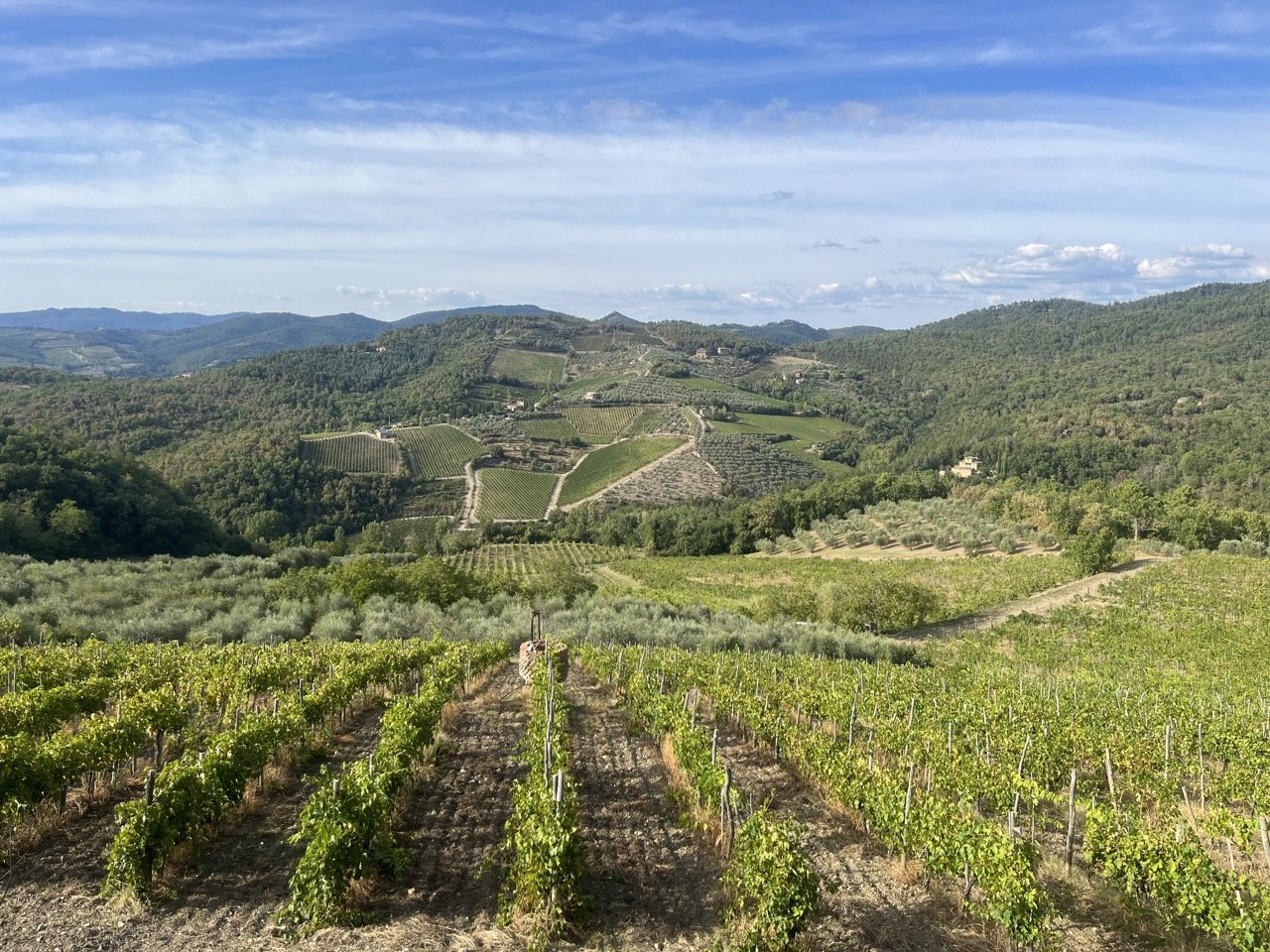
Regions of Italy
Italy has 20 official regions, each of which has their own government and regional identity. They are all quite different from one another and while Italians all see themselves as Italian, they usually strongly identify with the region that they’re from.
There is no official designation for what constitutes the north, center, and south of the country, but the generally accepted rule is that the south starts below Rome and the north begins with Tuscany. The center of the country is rather poorly defined, but largely includes places level with Rome and Lazio.
Sardinia and Sicily do not neatly fall into any category and are generally regarded as distinct entities.
Northern Italy
Northern Italy comprises the border regions with France, Switzerland, Austria, and Slovenia and extends south to Tuscany. Northerners might try to tell you that the north ends after the Po River Valley (ie. around Bologna), but Tuscany is generally regarded as northern Italy.
The regions of Northern Italy are: Piemonte, Valle d’Aosta, Lombardia, Liguria, Trentino-Alto Adige, Veneto, Friuli Venezia-Giulia, Toscana, and Emilia Romagna. The major cities are Torino, Milan, Venice, Bologna, Florence, Verona, and Genova.
This is Italy’s industrial heartland and economic engine. The northern part is characterized by the Alps and Dolomite mountains and the hiking here is the best in Italy. Further south you have the flat plain around the Po River valley and pretty coastlines in Liguria and Veneto.
The northeast region is a semi-autonomous German-speaking area where central and southern Italy’s olive groves and vineyards are replaced by rolling orchards of fruit trees and verdant valleys with resplendent alpine lakes.
Centuries of Austro-Hungarian rule have left their mark on everything from the cuisine to the people – don’t be surprised by blond haired and blue eyed Italians speaking German and eating spaetzle.
The northwest includes the industrial center of Torino, famous for Fiat and Italian sportscars. The nearby rolling hills are full of Nebbiolo grapes and prized white truffles.
Way up in the Alps on the border with France, you have the miniature Francophone region of Valle d’Aosta, known for pastoral scenes and wondrous mountains like Mont Blanc and the Matterhorn.
Northern Italy is full of medium-sized cities all worth exploring. Many of the region’s urban centers were historically their own city states and each area has their own distinct culture, cuisine, and dialects.
Central Italy
Central Italy is made up of Umbria, Marche, and Lazio. Some people would also include Tuscany here. Geographically, the region is dominated by the Apennine mountains and it is hilly throughout. Discounting Florence, Rome is the only major city in the region. Coastal Ancona is the biggest city in Marche, while the hilltop university city of Perugia is the largest town in Umbria.
Umbria is known for its pretty countryside and medieval hilltop villages like Perugia, Orvieto, Gubbio, and Assisi. This is also a region of religious importance, with numerous shrines, monasteries, and significant churches.
Marche is a little-visited mountainous coastal region with fishing ports, beaches, and remote hilltop towns. The port of Ancona is also a transit hub with shipping connections to the Balkans.
Lazio is the region around Rome, much of which historically pertained to the Roman Empire and then the Papal States. It is dense with Roman ruins and historical monuments.
Southern Italy
Beginning south of Rome, southern Italy comprises the regions of Abruzzo, Molise, Puglia, Basilicata, Campania, Calabria, and Sicily (depending on who you ask). This is Italy’s agricultural heartland and it’s an area that has been fought over for millennia and has changed hands countless times.
Having been settled by the Greeks prior to the Romans, for long periods of history the area was referred to as Magna Graecia and Greek influences can still be seen (and heard) today.
Italy’s poorest region, the late 1800’s and 1900’s saw massive waves of emigration out of the region. The vast majority of people of Italian descent outside of Italy can trace their heritage back to these regions.
Today, southern Italy’s economic state has improved considerably but it remains a relatively economically depressed region, with many people continuing to seek better employment opportunities in northern Italy and abroad.
Geographically, it ranges from hilly in Campania and Calabria to vast flat tablelands in Basilicata and northern Puglia. There are lovely beaches on all three coasts (Tyrrhenian, Ionian, and Adriatic), mountain wilderness in Calabria, and stunning archaeological ruins around Naples.
Puglia has charming villages, the baroque jewel of Lecce, and the sun-drenched Salento peninsula. Basilicata has the jaw-dropping stone cave city of Matera, Molise has good beaches and some lovely parks, and Abruzzo is home to the incredible Gran Sasso National Park wilderness.
Campania, though overlooked as a region, is home to Naples and the famed Amalfi Coast. Outside of these two destinations, barely anyone visits and while the coast is heavily developed (and unfortunately fairly ugly in many places) the interior is a green, hilly, volcanic land of small towns and lovely nature parks.
Sicily and Sardinia
Italy’s two island regions, Sardinia and Sicily don’t fit neatly into any box.
Sicily contains incredible Greek, Roman, and Norman ruins along with elegant cities, fantastic beaches, and a bucolic interior. It is a little continent of its own. Its food is also unique and delicious.
Sardinia is best known for its world-class beaches but there’s much more to it than that. Mysterious Bronze Age ruins dot the hinterland and forgotten Phoenician cities lie lapped by the sea. The mountainous and agricultural interior is a place that seems worlds and decades away from modernity. Sardinia is like nowhere else in Italy.

Connect with Italy travel expert Dania for help perfecting your itinerary, answers to all your travel questions, and fabulous local tips for a better visit!
Cost of travel in Italy
Italy’s largest cities and major tourist destinations are expensive destinations on par with much of northern Europe (though not Scandinavia). Although it is part of southern Europe, travel in Italy is significantly more expensive than in Spain, Portugal, or Greece.
That said, outside of the most-visited destinations, prices drop significantly. In general, prices in small cities and the countryside will be far less than in major metropolitan areas or tourist hubs.
Northern Italy is much wealthier than the center and south, and is correspondingly more expensive. Apart from the Amalfi Coast and tourist hotspots in Puglia, southern Italy often presents very good bargains.
Below are some average countrywide costs. We’ve calculated this assuming shoulder season prices. During high season, things can vary wildly.
Hotels
Expect for a clean and comfortable 3-star hotel or B&B to cost from 100 euros per night in a city and 70+ in small towns and the countryside.
Meals
Sit-down lunch for two – 35-50 euros without wine.
Dinner for two at a nice restaurant – 70-100 euros with a bottle of wine
Alcohol
Glass of wine at a bar or restaurant: 4-8 euros
Bottle of wine at a restaurant: 20+ euros
Liter of the house wine: 8-12 euros
Pint of beer: 4 for generic, 6+ for craft brews
Coffee
An espresso - known simply as a “caffè” in Italian - at a normal bar (a bar is really a cafe in Italy) typically costs about 1.00 euro, but may cost as much as 1.50 euros. A cappuccino costs a little more, from 1.20 to 1.50 euro. These prices are assuming counter service at casual bars.
In touristy areas of big cities and at fancy bars, prices for coffee may be double. High end bars that cater to tourists often also charge higher prices if you sit at a table as opposed to standing at the bar.
Car rental
20-60 euros per day. Local agencies are always cheaper than big international chains.
Taxi ride
Airport to city center: 60 euros.
20-minute ride within a city: 25-30 euros.
Public transport (long distance and local)
Buses and metro in cities: 1.50 euros
Long-distance high-speed train: 20-100 euros (always cheaper if booked in advance)
Long-distance slow-speed train: 10-30 euros
Entrance tickets to museums, sites, monuments
Most churches and museums: 3-12 euros
Premier sites (Colosseum, Vatican, Uffizi Gallery, etc.): 15-25 euros
Guided tours (private and group)
Half-day private guided tour: approximately 250 euros
Full-day private tour: 400-600 euros.
Small group tours: 40-80 euros per person.
Airports and where to fly into
From anywhere outside of Europe, almost all direct international flights to Italy arrive to either Roma Fiumicino or Milano Malpensa airports. Venice and Naples airports have very limited non-stop connections with a few non-European cities, so are potentially worth looking at.
If you’re arriving to Italy via a connecting flight elsewhere in Europe, many other cities are reachable via smaller local airports.
Most airports in Italy have good public transit connections to reach city centers.
In Rome, the Leonardo Express train takes you from Fiumicino Airport to the central Roma Termini train station.
In Milan you have the Malpensa Express train from Malpensa Airport to Milano Centrale train station.
Florence’s T2 tram connects the airport and city center.
Bologna is served by a direct bus route.
Most other cities also have easy and direct public transit options between their airports and city centers.
Transportation and travel in Italy
Trams in Milan
Italy is extremely well served by public transport. Trains service is available to all major cities, almost all secondary cities, and most tertiary ones. Most cities are within an hour of an airport with European flight connections.
Venice, Milan, Florence, Rome, Naples, and Bologna, are all connected by a network of high-speed Frecciarossa trains that will take you between major urban areas in 1-3 hours.
Within a region, most cities and large towns are connected by local trains, while public buses will usually take you to smaller towns.
A few larger cities like Rome and Milan have metro systems, but public transportation within most cities is limited to above-ground light rail and buses.
Train travel in Italy
A Trenitalia train passing through the countryside near to Pisa
Traveling by train is almost always the most convenient and cheapest option in Italy. It’s also the most eco-friendly. Trains run frequently and are comfortable, easy to navigate, and easily reachable from city centers or nearby towns. Despite their less-than-stellar reputation, they are generally reliable and on time.
The above is true for everywhere from Rome and north. In southern Italy, Sicily, and Sardinia, train service is far less extensive, especially outside of major cities and you may find that you need to rely on buses more frequently than trains.
In Sicily and Sardinia, even the bus is not a good option, and you really need to have a car to get around.
Trenitalia and ItaloTreno
When checking and booking train tickets in Italy, you have two companies and two websites to choose between: Trenitalia - www.trenitalia.com/ - and ItaloTreno (Italo) - www.italotreno.it/en.
While some swear by one or the other, we don’t think there’s much difference. Our advice is to simply pick whichever has the most convenient departure time for you and/or the best price.
Trenitalia is Italy’s national train service and is owned and operated by the State. It runs the vast majority of all train routes in Italy. Trenitalia has all different classes of trains, with very slow Regionale trains, somewhat faster InterCity trains, high-speed Freccia trains, and on and on.
Italo is a relative newcomer which exclusively operates high-speed trains on a number of Italy’s most heavily transited routes. Their trains are often a bit newer than Trenitalia’s and service is somewhat less prone to strikes and delays.
Trenitalia typically has more frequent departures while Italo’s trains are a little newer. All Italo trains have free Wifi while you’ll only get that luxury on Trenitalia’s Frecciarossa and Frecciaargento trains or in 1st class cabins on other trains. If you plan on surfing the internet instead of enjoying the countryside or chatting with your travel companions (boo!), this might be a big deal.
Where to buy train tickets
Your best bet is to purchase your tickets online on either train company’s official website: https://www.trenitalia.com/ and https://www.italotreno.it/en. However, you can also purchase tickets directly at any train station at a ticket window or via electronic ticketing machines.
If you’re in a pinch and aren’t able to buy tickets in advance, you can also buy them aboard the train. There is a 5 euro surcharge for doing so. Please also note that if buying a ticket aboard the train, you need to find the train conductor before they come to check your tickets. If you don’t and they arrive to find you without tickets, you can be fined.
Omio is also a convenient website/app to use if you want to compare options from Trenitalia and Italo at the same time. It’s a 3rd party aggregator so tickets cost a bit more than booking direct, but comparing prices is easy, the site has a great design, and you can keep all your bookings in one place. You can also see options for bus routes.
When to buy tickets
It’s always best to book your train tickets as far in advance as possible. For longer distance journeys in Italy, ticket prices increase the closer you get to your travel dates.
Intercity and Freccia trains increase in cost significantly as travel dates approach and last minute bookings could cost up to 4X more than advance bookings. Regionale trains, however, rarely vary in price, and seldom sell out, so there’s really no need to purchase them in advance.
Keep in mind that with Trenitalia tickets only become available 90-120 days before the date of travel. Therefore, you cannot purchase tickets more than 3-4 months in advance.
If you’re in a pinch and aren’t able to buy tickets in advance, you can also buy them aboard any train. There is a 5 euro surcharge for doing so, however. Also note that if buying a ticket aboard the train, you need to find the train conductor before they come to check your tickets. If you don’t and they arrive to find you without tickets, you can be fined.
Cost of train tickets
A one-way ticket on a mid-speed Regionale Veloce train will cost 15-20 euros.
High-speed Frecciarossa trains cost from 20-100 euros depending on the journey and when you buy them. A one-way trip from Rome to Naples on the high-speed train costs as little as 20 euros if purchased in advance, but can get up to above 60 if bought last-minute.
A Trenitalia timetable for the Rome to Naples route
Slower trains cost significantly less but are almost never worth the loss in time.
Ticket prices for high-speed trains often increase dramatically as you get closer to the date of travel, so booking your tickets far in advance will usually save you huge amounts of money. Tickets cannot be purchased more than 90 days in advance, so keep this in mind.
Local trains and some slower regional ones have fixed pricing that does not change depending on the date.
Luggage storage
On all longer-distance trains, there are overhead luggage storage racks running the length of the seating area. The racks are quite deep, so you can usually fit even relatively large “checked” luggage.
Each car also has a location at the end of the car with additional non-overhead luggage storage for heavy items you don’t want to have to lift.
Validating tickets
When you buy tickets at a train station, you will receive a printed ticket that needs to be validated before boarding the train.
Near the tracks, you will find yellow or green machines into which you must insert your ticket for them to be stamped, showing the current day and time. The machines are often placed at the beginning of the track, so if you wait to validate until you’re next to the train, you’ll find yourself having to spring back to the machine.
Photo: Alessandro Antonelli, CC BY 3.0, via Wikimedia Commons
Once you’re on the train, the conductor will come around and ask to see your tickets. If you have not validated your ticket, you can be fined a substantial sum.
If you have an electronic ticket that is associated with your name and a specific date of travel, there’s no need to validate anything.
Renting a car
The classic Fiat 500, called a Cinquecento in Italian
If you only plan on visiting major cities in Italy, there’s no need to have a car. When staying in major urban areas, the car is just a hassle.
However, renting a car makes sense if you’re going to be visiting small towns, the countryside, natural areas, or beaches.
Where to find a rental car
All the major international rental companies have offices in decent-sized Italian cities and at most airports. You can also often pick up car rentals at major train stations, like Roma Termini or Florence Santa Maria Novella.
To check prices and book, I recommend using the following two car rental websites:
DiscoverCars includes offerings from all the major international rental companies as well as lots of smaller local agencies, which often have much better pricing. You can often find great deals.
AutoEurope tends to be more expensive, but they only list options from large, well-reviewed companies and their customer service is excellent. Their deals often include “zero deductible” (i.e. full coverage) rental insurance.
Things to know when renting a car
Cost of renting a car: A car rental in Italy will cost you between 20 and 60 euros per day in shoulder season. If you’re renting in high season, you should expect to pay as high as 100 euros per day. If you try to book your car rental at the last minute, you may even see prices above 150 euros per day.
Manual vs automatic: Most cars in Italy are manual transmission, and renting an automatic will often be more expensive. There is also a limited supply of automatic cars, so you should book well in advance if you are not comfortable driving stick shift.
Renting from smaller domestic or local companies is almost always cheaper and many of them have good cars and friendly customer support. Local companies may have older, higher-mileage cars and fewer automatics.
When picking up your rental car, you may be asked if you want to pay an additional fee to have the use of a Telepass device. This is an automatic toll payment system that will let you pass through tolls without needing to stop. You’ll be billed for the total toll amount when you return the car. Companies typically charge a few euros per day for this service.
An International Driving Permit (IDP) is legally mandated in Italy. Online sources will tell you that it’s not necessary and that you won’t be asked for it when renting a car. While they are right that rental agencies rarely request to see it, some do, and the police can fine you if you don’t have it.
An international driving permit
Also, since you will technically be driving illegally if you don’t have an international permit, insurance companies may refuse to cover you in the event of an accident.
Get the permit.
Driving in Italy
The hairpin turns of the “Passo dello Stelvio” route in Northern Italy
Driving in Italy is very different than in North America, the UK, Australia, Singapore, and much of northern Europe.
If you’re used to driving in Peruvian cities or Beirut, Lebanon, you’ll probably find the driving in Italy to be quite pleasant and orderly. If you’re from a place where the traffic is…calmer, the experience of driving in Italy will sit somewhere between exciting and nerve-wracking.
Despite that, road conditions in Italy are excellent, highways are well-maintained and signposted, and gas and service stations are plentiful. The infrastructure, even in small areas and distant countryside, is quite good.
How Italians drive
What many foreign drivers find challenging about driving in Italy is not so much the roads, but rather how Italians drive on them. Second to that would be the narrow streets, steep hills, and tight curves. Parking spots can also be quite small and driving in cities can be very confusing.
If you’re driving around small towns and countryside, there’s really nothing to worry about.
Italian driving style is simply a bit more aggressive than in many other places. Cars will tail you closer than you’re used to, drivers will pass in no passing zones and on tight roads, and people drive quickly even on winding mountain roads with no shoulder.
Tolls
Italy’s highway system has frequent tolls. If you don’t have an electronic Telepass, when you pass through a toll booth, you’ll press a button to receive a ticket. Then, wherever you exit the highway, you’ll pass through another toll both.
A toll along the highway
You’ll have to insert the aforementioned ticket into that toll booth. The machine will calculate how far you’ve gone and what you owe. Once you’ve paid, the toll will open. If you want a receipt, you have to press the red “ricevuta” button on the toll booth.
If you arrive to a toll booth and have lost your ticket, you’ll be charged the maximum fee applicable to the entire portion of road that precedes that toll booth.
Tolls can be paid by credit card or cash. However, some booths only take credit card, so you need to pay attention to the signs if you don’t have both means of payment handy.
ZTL – Zona Traffico Limitato (limited traffic zones):
The ZTL (colloquially called Zona TL) is an area in a town or city into which traffic is restricted at different times of day. Areas with ZTLs in effect will usually have a white sign with writing or an electronic sign that announces the hours for restrictions. Electronic signs may read “chiuso” (closed) or “attivo” (active) to indicate that traffic is restricted or “aperto” (open) or “non attivo” (not active) to indicate that there are no restrictions.
If you enter a ZTL when traffic is restricted, you will be fined. There are cameras monitoring these areas.
A typical ZTL sign indicating restricted traffic from 08:00 am to 08:00 pm
ZTL signs are not always easy to see, but usually they are at the entrances to the historic centers of cities or by pedestrian-only streets.
If your hotel is in a ZTL zone, they often have allowances for their guests. To avoid a ticket, you can call your hotel in advance, give them your license plate number, and they will call in to the local police/municipality to grant your car access to that area.
Parking
All cities and towns in Italy have public parking, both free and paid. There is on-street parking almost everywhere, but it’s limited, and parking garages are not a thing almost anywhere except for very large cities. Even in major cities, multi-level parking lots are surprisingly rare.
For smaller cities and towns, public parking lots are almost always outside of the historic center. You’ll need to park your car and then walk in.
A parking meter in central Rome
On-street parking is organized by a color system:
Yellow lines mean that area is restricted to certain cars (residents, workers, emergency vehicles, etc.). You can’t park in yellow spots.
White lines mean the space is public and free. Usually, these spots are not time limited.
Blue lines indicate a space that is public but paid. Meters are located on the sidewalk and you will need to find one and pay. Some meters will give you a ticket that says when your parking is valid until. This ticket needs to be displayed visibly on your dash. Other meters will ask you to enter your license plate number. Sometimes they will give you a ticket (and you should still place it on the dash), while other times no ticket will be dispensed.
Most parking meters accept both cash and credit card, but either option may be broken on any given day, so you should always have both.
Private parking lots are rare, but do exist in cities. They’re often small, underground lots and North American drivers will be surprised at how narrow the spaces are. Sometimes you might have to park the car yourself or a valet may do it for you.
Most parking can now also be paid via an application on your phone. Download the Easy Park app (https://www.easypark.com/en-it) to make your life easy.

Hotels & accommodation
A room at the 5-star Palazzo Bozzi Corso hotel in Lecce
As one of the most visited countries in the world, Italy has a huge array of accommodation options, from cheap hostels to 5-star luxury properties.
In big cities and major tourist destinations, you’ll find all the major international hotel chains. Outside of these areas, your options will mostly be small hotels, b&bs, pensions, agriturismi, and air bnb/vrbo.
We believe in sustainable travel, so would encourage you to book with small locally-owned properties rather than huge corporations. We also suggest booking direct, instead of with OTAs and big booking platforms, as you will save money and the locals won’t have to pay commissions.
Different types of hotels in Italy:
Albergo/hotel – Albergo is the Italian word for hotel. These are your standard hotels, of all different classes. They are larger commercial properties.
B&B – These are small, typically family-run properties, usually with only a few rooms.
Pensione - A pensione is like a b&b, but typically a bit larger, more commercial, and much less intimate. A pensione also may have more limited services (ie. less frequent cleaning, not always staffed, no breakfast, etc.). It’s kind of like an adult hostel or residence hotel. Pensiones may offer half or full board, where you have meals included in the price of your stay, or available for an additional fee.
Agriturismo – This type of accommodation is really only found in the countryside. Ostensibly, for a property to be classified as an agriturismo, in addition to offering rooms, the property must be engaged in some sort of agricultural activity.
In reality, the difference between an agriturismo and a b&b is often pretty minimal. While some agriturismi really highlight their agricultural focus, and people come to experience that, others function more or less just as a b&b.
Some agriturismi will offer the option to include half or full board (lunch or lunch and dinner) as part of your stay.
Airbnb and VRBO – These are two platforms where property owners can rent out their apartment, house/villa, or a room for a daily fee. Both platforms are legal and prominent all over Italy.
Private villas – There are hundreds of companies in Italy that specialize in renting luxury villas to vacationers.
When to book your hotels
The easy answer is: as early as possible!
If you are traveling in the summer months, you should plan on booking your hotels months in advance both in order to get better prices and to ensure availability. Entire towns, cities, and provinces can book up almost entirely during peak season and aside from paying astronomical prices for last-minute bookings, you genuinely can’t be assured that you’ll even find a room.
If you’re traveling in shoulder season and are prepared to be a bit flexible with where you stay (think small town just outside a city or countryside instead of town center), you can almost always find a room last-minute and often for a good price. You won’t usually get any any major discounts for booking late, although you can often negotiate a better rate if you book direct and pay cash.
If traveling in the winter, finding accommodation anywhere outside of ski resorts will be easy and there is no need to book in advance except for around Christmas and New Year.
Tassa di soggiorno
The “tassa di soggiorno” is a nightly tax that is levied by local municipalities and is an additional per night fee when you rent a hotel room or apartment. It varies from city to city, but is usually somewhere between 1 and 4 euros. It is never included in the upfront price of your booking, almost always needs to be paid in cash, and is a mandatory fee.

Dania has answers!
Connect with Dania in Italy for the best local info and help planning a better trip!
Restaurants and Dining in Italy
The restaurant dining area of the hotel Masseria Torre Maizza in southern Italy
Italian cuisine and the Mediterranean diet have been appreciated for centuries. French cooking may be more intricate, but nowhere does the simple things as well as Italy. Here, the focus is always on fresh, hyper local, and seasonal ingredients.
Dishes are made to highlight their main ingredients and cooks use very little sauce and seasoning. You’ll find many dishes that contain just a few components, and the goal is always to bring out the flavor of each ingredient rather than combining them to create a blend of flavors.
Among other things, expect to see lots of pasta, gamey meats, cured pork, fresh seafood, leafy greens, hard cheeses, and nightshades (tomatoes, eggplant, peppers, etc.).
Meals & mealtimes:
Breakfast – Eaten from 7:00-9:00 AM, breakfast is a light meal in Italy, typically consisting of little more than a coffee and a croissant. Many Italians will have breakfast at their local bar (which in Italy is a café), while standing at the counter. At home, Italians might eat yogurt, toast, or a little bit of cereal.
Hotels catering to foreign guests will often have more substantial breakfasts including cured meats, eggs, and sweet breads. By North American standards, most hotel breakfasts are quite poor.
Lunch – Eaten from 12:30-2:30 PM, lunch has historically been the main meal of the day in Italy. Italians will typically have some sort of salad, vegetable, or appetizer, and then either a first or second course. First courses are pasta or rice dishes, while seconds are meat or fish. It’s normal in Italy to have a glass of wine with your lunch, even on work days.
Dinner – Eaten from 7:30-10:00 PM, dinner is a lighter but still substantial meal. Counterintuitively, when dining at restaurants, dinner menus may actually be larger than lunch menus and portions are often larger too. This is because dinners out are often reserved for celebratory meals. At dinner, it would not be uncommon to order both a first and second course, something that’s more rare at lunch.
A restaurant on the Pugliese coast
Types of Restaurants in Italy
In Italy, there are three primary types of restaurants: Osteria, Trattoria, and Ristorante.
An osteria is usually the most informal and casual of the three.
A trattoria is more formal and may serve somewhat more elaborate dishes, but the distinction between the two is a historical one and no longer very relevant.
A ristorante is the most formal level of dining in Italy and can be quite elegant. You can expect more developed menus, a nicer ambiance, and more refined service. Prices will be higher as well.
Outside of this, you also have the “tavola calda”, which is a sort of Italian diner. These restaurants are favored by blue collar workers on their lunch breaks and usually feature a rotating menu of foods that can be prepared in large portions ahead of time and then sold very cheaply. If you’re on a budget, they’re very good value for money.
Service at restaurants
The service in Italy is usually cheerful enough and mostly efficient, but waitstaff are not nearly as attentive, fawning, or faux friendly as in North America.
Do not be offended if waiters are not outwardly friendly or smiley. This lack of cheer doesn’t equate to their being rude or dismissive – they’re just professionals doing their job and the custom here is not to be excessively friendly with diners.
A chef in Puglia serves guests at a private residence
Service will not be as quick as in some places and waiters may not always check in to see how everything is or if you want anything else. After handing you your menus, the waiter may not return to take your order for some time. If you need your waiter, feel free to get their attention and call them over.
Asking for the check: At the end of the meal, you will certainly have to ask for the check whenever you’re ready to pay. It will not be brought to you unless you ask.
Ordering food: Italians do not typically request modifications to dishes (beyond maybe the addition or subtraction of a single item) and waiters and kitchens may not be receptive to such requests. However, if you have food allergies or intolerances, know that menus must specify the ingredients in all dishes and kitchens are usually happy to help you find something that meets your needs.
Food traditions: Italians are extremely traditional about their food and have certain unspoken culinary rules by which they abide. For example, don’t be surprised if a waiter rolls their eyes or comments should you order grated cheese for dishes containing seafood, or a coffee with milk after 11:00 AM.
In these instances, there’s no reason to get offended and they don’t actually care, but they just can’t help themselves. An exception to this is Florentines who will genuinely refuse to cook you a Bistecca alla Fiorentina any way other than rare.
Paying and tipping at restaurants
Cash or card: Most restaurants now accept credit card. Restaurants that do not accept credit card must make diners aware of this in advance. Nonetheless, it’s not uncommon to find places that are cash only or for the waiter to tell you the magic line “sorry the machine isn’t working today”. Having cash is always a good idea, but higher end restaurants will always take card.
Tipping at restaurants in Italy is uncommon. At informal restaurants or for inexpensive meals, a tip is never expected. Likewise at cafes or bars.
When dining at higher-end restaurants, Italians still might not tip or might only round up the bill to the nearest whole number. In heavily touristed areas, tipping has become much more common, albeit mostly by foreigners. In these areas, and at touristy restaurants, waitstaff may expect a tip. 5-10% is always a reasonable amount.
The famous “coperto” – In many restaurants across Italy, a small service fee, a “coperto”, is applied to every bill. This fee is normally 1-3 euros per person and ostensibly serves to cover the cost of bread, linens, silverware, dishwashing, etc. It is mandatory and it is not a tip (the waiter doesn’t receive it).
Any coperto charge in excess of 3 euros per person would begin to raise eyebrows.
The coperto charge (circled in red) on a restaurant bill
Other useful things to know
Speaking English
English is widely spoken in major cities and tourist destinations, but the likelihood that you’ll find an English speaker in rural areas, especially in the south, falls precipitously. While many young people anywhere will speak some English, away from larger cities, you can’t it take it for granted that you’ll be able to find an English speaker.
Greeting people
When entering a restaurant or store, it’s customary to say hello. Same goes when leaving.
When you enter somewhere, it is polite to say “Buongiorno” (in the morning or afternoon), “Buona sera” (in the evening), or “Salve” (at any time of day). Saying “Ciao” is too informal and would be considered odd.
When you leave, it’s fine to simply say “Ciao”.
Wherever you are, if someone says “Buongiorno” or “Buona sera” to you, it is polite for you to respond in kind (just repeat the same greeting).
Cultural nuances
Italians are generally warm and friendly. It’s easy to strike up conversations with people and you shouldn’t be surprised if strangers speak to you. It may be as simple as someone chatting with you while you’re standing in line.
Personal space in Italy is less of a regard so be prepared for people to invade yours. A stranger may grab your hand or elbow as they’re talking to you, pat you on the back, or stand very close to you.
Dressing in Italy is an art. While fashion norms have loosened over the last two decades and Italians do not dress as well as they used to, people still dress much better than in most of the rest of the world. When going to dinner at decent restaurants and above, men should wear long pants and a nice shirt or sweater. Woman should also wear nicer items that are at least some what elegant.
Gym clothes and athleisure wear are not appropriate outside of the daytime and really are not commonly used except when doing exercise.
For men, high white socks with shorts is a very dorky look. Also, older men in Italy commonly wear pants rather than shorts even in the height of summer. While wearing shorts in the daytime is perfectly acceptable, pants are preferred for all but the most informal of evening activities.
When visiting churches or other religious sites, women should cover their shoulders. Knee length skirts are no longer required anywhere other than potentially the Vatican.
Queuing in lines is more of a concept than a reality. It’s not uncommon for people to cut in line or for a queue for the bus to resemble a very flat arrow attacking a singular point.
Bargaining in Italy is common and you shouldn’t be shy about asking for a discount or negotiating on the price of things. When paying for things in cash, you can also often ask for a cash discount.


10-day Italy Itinerary Examples
10-days with Rome, Florence, Tuscan wine country, Venice, & Milan
Days 1-3: Rome
Days 4-5: Florence
Day 6: Day trip from Florence to Tuscan wine country (Chianti)
Days: 7-8: Venice
Days 9-10: Milan
10 days with Rome, Florence, Cinque Terre, Milan, and Venice
Days 1-3: Rome
Days 3-4: Florence
Days 5-6: Cinque Terre
Days 7-8: Milan
Days 9-10: Venice
10 days with Rome, Florence, Bologna, Venice, and Milan
Days 1-3: Rome
Days 3-4: Florence
Days 5-6: Bologna
Days 7-8: Venice
Days 9-10: Milan
10 days with Venice, Florence, Rome, Naples & Amalfi Coast
Days 1-2: Venice
Days 3-4: Florence
Days 5-7: Rome
Days 8-10: Naples & Amalfi Coast










